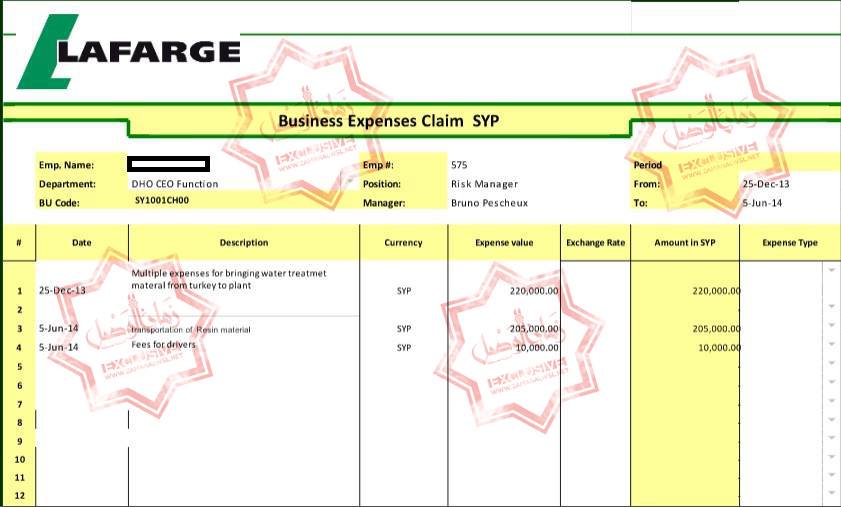The Islamic State seized tons of toxic Hydrazine material after seizing control of Lafarge Cement Syria in Aleppo province in September 2014, the material that might have been used later in the ISIS explosives-laden vehicles, documents obtained by Zaman al-Wasl showed.
In the beginning it is worth mentioning that Lafarge Cement Syria that was established in Jalibeh town, between Ras Alain and Ain Arab "Kobani", 160 km away from Aleppo, has since 2013, been under many controlling bodies with different agendas. The plant had become out of areas controlled by the Syrian regime in 2013 when it was taken by People‘s Protection Units “YPG”, the armed wing of the Democratic Union party “PYD” which is the Syrian branch of Kurdistan Workers’ Party “PKK”. However, on September 19, 2014, the Islamic State “ISIS” managed to control the plant, losing it again and the YPG controlled it in Spring 2015.
Sources hinted to Zaman al-Wasl that an effort was made to conceal the fact of capturing tonnes of Hydrazine material by the Islamic State and no one knows what has been done with it.
Hydrazine is an inorganic component that appears as a colorless flammable liquid with an ammonia-like odour. It is highly toxic and dangerously unstable unless handled in solution. It is mainly used as a foaming agent in preparing polymer foams, additionally, it is used in various rocket fuels and as a precursor for blowing agents. It is used within both nuclear and conventional electrical power plant steam cycles as an oxygen scavenger to control concentrations of dissolved oxygen in an effort to reduce corrosion.
At the time when the Islamic State controlled the plant of cement, it is expected it had had significant storage of Hydrazine which was used in Electricity generators, and ISIS seized the whole amount.
Sources provided emails between Ahmed, the Jordanian Risks managers who requested approval of Mamdouh Khalid, the Syrian manager of the plant, for payments of 435 thousand Syrian pounds, to buy Hydrazine and Raisin.
Sources revealed that Lafarge Cement Syria had illegally obtained Hydrazine from Turkey in 2013 via Jarablus crossing- point taking advantages of negligence in the Environment department, as the director of the department had forgotten reminding the manager Mamdouh Khalid about near run-out of Hydrazine, which forced the company to look for quick alternative to provide the material under circumstances of economic punishments against Syria regime, they found Turkish market the quickest source for Hydrazine.
In regard to the storage of Hydrazine in the plant after controlling it by the Islamic State, sources mentioned that fighters have uninstalled all equipment and took all parts from the plant, and transferred them to Raqqa, but no one knows what happened to Hydrazine, especially that the YPG fighters were not able to enter all parts of the plant, fearing that ISIS would have put explosive inside.
Zaman al-Wasl contacted Frederic Jolibois, CEO at Lafarge Cement Syria, to ask about seizing huge amounts of Hydrazine by the Islamic State, he refused to comment saying: “our company does not reply to rumors and speculation.”
Hydrazine was not the only dangerous material in the French Cement plant, there was radiating materials inside many laboratory equipment as well as Gama matrix Device in the crasher and density measuring device, which all were under regular supervision by the Atomic Energy Commission in Syria. Sources confirm that no one has an idea about the fate of those devices and the radiating material inside them, as inexpert moving of those devices could distribute dangerous radiation and harm to people and the environment.


















Comments About This Article
Please fill the fields below.